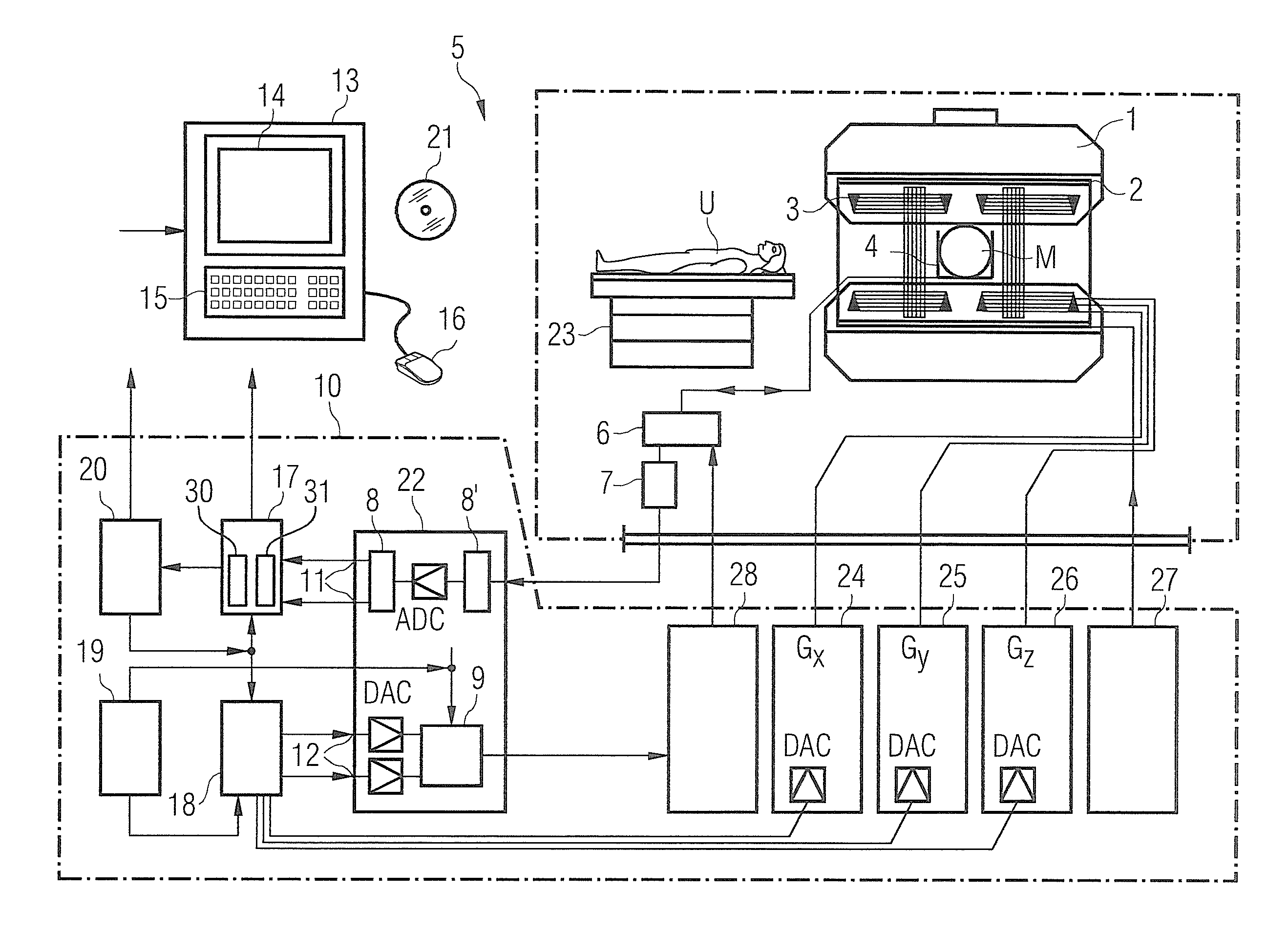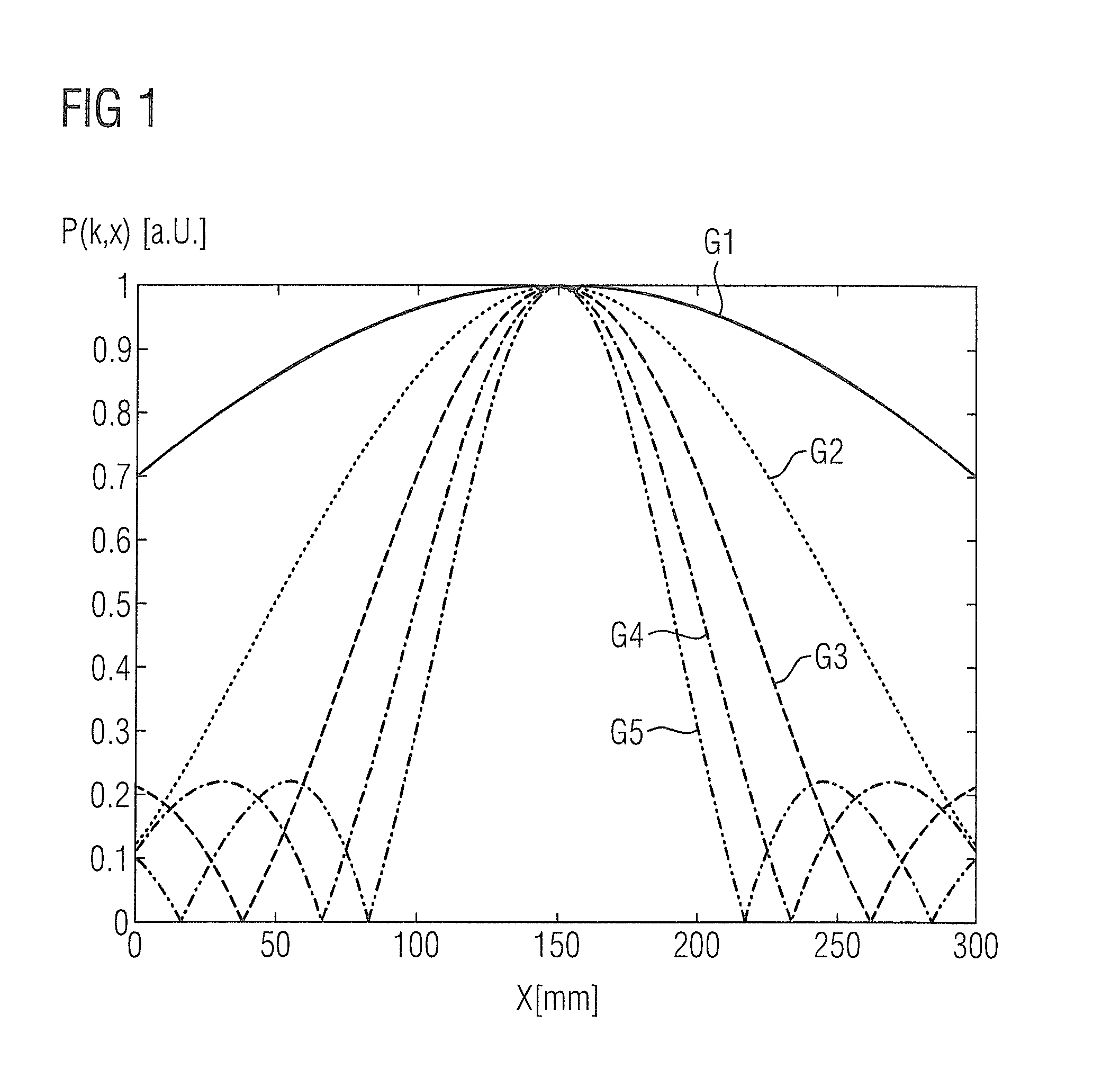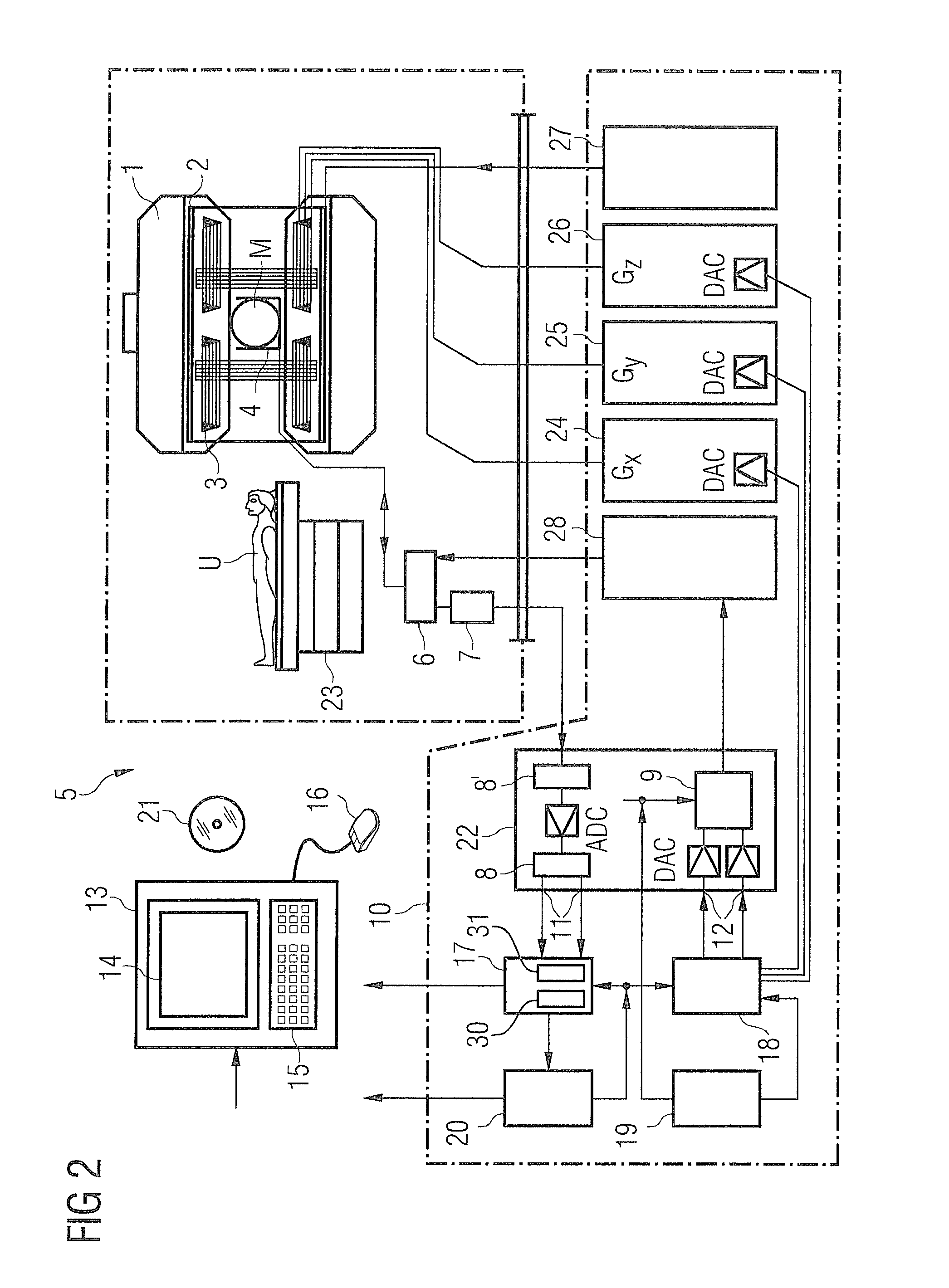Method and apparatus for correction of artifacts in magnetic resonance images
a magnetic resonance image and artifact technology, applied in the field of magnetic resonance image artifact correction methods and apparatuses, can solve the problems of blurring artifacts at the image edge, no longer excited outer image regions, and more prominent effects, and achieve the effect of reducing artifacts
- Summary
- Abstract
- Description
- Claims
- Application Information
AI Technical Summary
Benefits of technology
Problems solved by technology
Method used
Image
Examples
Embodiment Construction
[0048]FIG. 2 is a schematic representation of a magnetic resonance system 5 (a magnetic resonance imaging or magnetic resonance tomography apparatus). A basic field magnet 1 generates a temporally constant, strong magnetic field for polarization or, respectively, alignment of the nuclear spins in an examination region of an examination subject U (for example a part of a human body that is to be examined) which lies on a table 23 and is slid into the magnetic resonance system 5. The high homogeneity of the basic magnetic field that is required for the nuclear magnetic resonance measurement is defined in a typically (but not necessarily) spherical measurement volume M in which are arranged the parts of the human body that are to be examined. To support the homogeneity requirements, and in particular to eliminate temporally invariable influences, what are known as shim plates made of ferromagnetic material are mounted at a suitable location. Temporally variable influences are eliminate...
PUM
 Login to View More
Login to View More Abstract
Description
Claims
Application Information
 Login to View More
Login to View More - R&D
- Intellectual Property
- Life Sciences
- Materials
- Tech Scout
- Unparalleled Data Quality
- Higher Quality Content
- 60% Fewer Hallucinations
Browse by: Latest US Patents, China's latest patents, Technical Efficacy Thesaurus, Application Domain, Technology Topic, Popular Technical Reports.
© 2025 PatSnap. All rights reserved.Legal|Privacy policy|Modern Slavery Act Transparency Statement|Sitemap|About US| Contact US: help@patsnap.com



